Exhibit / September 18, 2018
- Channon’s language around “warrior-monks” sought to evoke Eastern martial arts techniques and a moral obligation to wage war ethically.
- Channon visited many human potential movement organizations in the mid-to-late ’70s and listed them in his concept paper.
- Channon’s evocative list of First Earth Battalion military specialties include everything from the relatively mundane “physicist” and “general systems theorist” to “video technoids” and “martial arts wizards.”
- Macrobiotic diet suggestions and the recognition of the importance of aerobic exercise presage civilian health trends in the ’80s.
- First Earth Battalion artillery units would use elements like “ergonomic settings” and “samadi (sic) tanks for command decisions.”
- Channon’s recognition of how the computer would change both civilian and military mapmaking is legitimately prescient.
- Channon envisioned families of his warrior-monks highlighting the danger of nuclear arsenals; nuclear disarmament groups used this very tactic throughout the Cold War.
- Channon evokes the mystery of the dollar bill’s Eye of Providence along with the motto “E Pluribus Unum” to call for a more consciously diverse military.
- The First Earth Battalion’s combination of ancient techniques and modern technology is illustrated here as “omni-directional thought.”
- The U.S. would use heavy metal, Barry Manilow, and Barney the Dinosaur instead of “indigenous music and words of peace” in its operations in Panama, at Waco, and in its black-site interrogation centers (as shown in the film version of The Men Who Stare At Goats).
- Channon’s “soft tactics” were a preview of the media battlefield on which the U.S. would wage war starting in the late 1980s.
- Channon envisioned a domestic “natural guard” that would respond to environmental disasters. What was front of mind for eco-warriors in the early ’80s? Kudzu in the South and desertification in the West.
- Again, the Eye of Providence, used by mystics at the outset of the American experiment, reappears in Channon’s text.
- Channon cites the popular 1980 book The Aquarian Conspiracy by Marilyn Ferguson as a good survey of the New Age movement in America.
Object Name: First Earth Battalion documents
Maker and Year: Jim Channon, 1979 – 1982
Object Type: Concept Paper and Field Manual
Image Source: Concept Paper: archive.org; Field Manual: arcturus.org
Description: (Michael Grasso)
In 1979, a U.S. Army lieutenant colonel named Jim Channon completed a manual for a proposed new armed forces division: one impelled by a mission of peace and staffed by a new kind of soldier. Channon spent two years in the aftermath of the Vietnam War gathering information about the burgeoning late-’70s human potential movement. His research took him to the Esalen Institute in northern California, which was by 1977 on the vanguard in the “Aquarian” revolution in human thought. Channon saw promise in using the techniques pioneered by organizations like Esalen to tap into new sources of power and wisdom for America’s armed forces in the years to come. Not only could these techniques help a soldier perform better physically and mentally, but the attitude and mental outlook engendered by meditation, yoga, positive visualization, and other esoteric techniques could make his proposed “warrior-monks” soldiers of peace. In addition to the human potential movement, Channon saw the technological advances happening in California in the 1970s as a source of new technologies for visualizing and shaping the modern battlefield.
Channon called his proposed unit the First Earth Battalion. In 1979, Channon introduced his concept paper for submission to Task Force Delta, a U.S. Army program dedicated to finding new and previously-unconsidered ways to improve recruitment and retention given that the U.S. military was now an all-volunteer force. Task Force Delta’s many projects included the development of the late Cold War “Be All You Can Be” Army marketing slogan, created by General Maxwell Thurman in consultation with the RAND Corporation and advertising agency J.W. Ayer. It was notably inspired by prominent psychologist and self-actualization guru Abraham Maslow. New times called for new recruitment and even organizational methods, and in the post-Vietnam malaise ultimately no proposal was too outlandish. Channon’s embrace of the California counterculture (as seen in his encyclopedic listing of New Age organizations above) was no more outré than the Pentagon and CIA’s support of remote viewing programs in the 1970s at places like the Stanford Research Institute.
In both his proposal paper from 1979 and in his final, more polished First Earth Battalion Field Manual (completed in 1982), Channon visualizes a soldier who has given up obedience and allegiance to a flag or country, and instead defends the entire Earth. The deep ecological roots of Channon’s proposed soldier are seen in his “Earth Prayer” and the proposal for a nuclear “Conscience Corps” of military families camped outside nuclear missile installations worldwide. Channon envisioned the Battalion as a strike team that could deploy to respond to ecological disaster and live off the land sustainably. His warrior-monks would use the aforementioned methods of biofeedback, meditation, and positive visualization to become physically superior to the ordinary run of soldier. But there was also no fear of modern technology in Channon’s dream battalion. The growing web of worldwide telecommunications and mass media play an essential role in Channon’s envisioning of a First Earth Battalion “battle scenario,” in which people worldwide would see the good works of the kinder, gentler army on their TV screens and react with love and support. Channon’s 1979 job list includes “video technoids,” “cinematographers,” and “satellite technoids.”
One wonders what kind of real impact Channon’s proposals had on the U.S. military, men staring at goats at Fort Meade and Fort Bragg in the 1980s aside. Computers and satellite mapping technology in the coming years were absolutely integrated more deeply into the military’s infrastructure, with all the concomitant civilian consumer impact. The first Gulf War (and even Operation Just Cause, the plan to remove Manuel Noriega in Panama, commanded by none other than General Thurman) demonstrated clearly the impact of global media on the waging of war (not to mention the use of non-lethal sonic weaponry in the form of the rock music blasted at Noriega in the Vatican embassy). The Pentagon’s media blitz during the first Gulf War, CNN’s subsequent rise, and the public’s embrace of personalities like Norman Schwarzkopf and Colin Powell prove Channon’s vision of worldwide video warriors came true in a horribly warped way (not to mention the irony of satellite news stations broadcasting scenes of the environmental disaster of the burning oil wells of Kuwait, something that the Gulf War forces seemed incapable or unwilling to repair).
In the 1990s and beyond, remote viewers and psychic warriors left over from the Cold War would go into business for themselves in private security and corporate consultation, often headquartering in remote, picturesque locales such as Hawaii (including Channon himself). Much as the New Age mentality was subsumed into corporate America, so too were Channon’s warrior-monks.
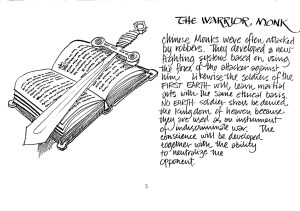
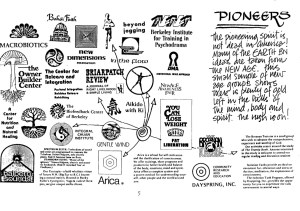
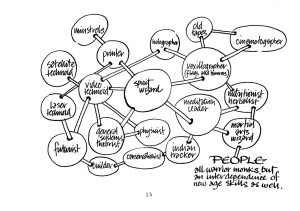

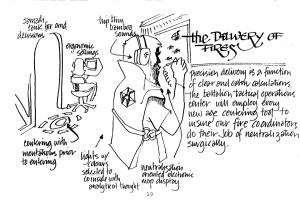

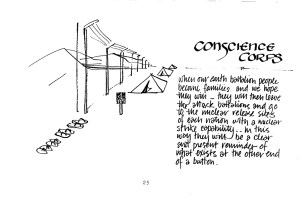

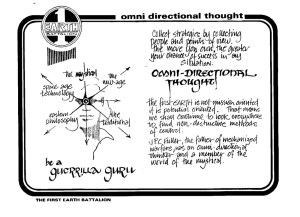
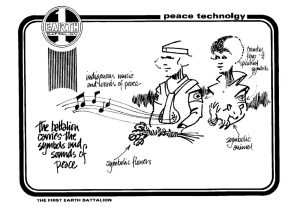
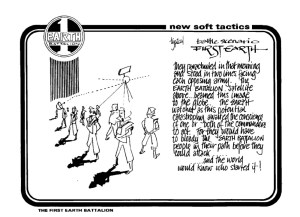

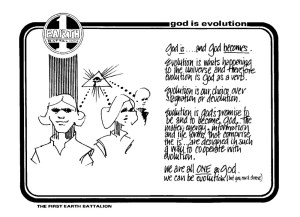




Pingback: Where Magic Meets Technology: Peter Bebergal’s ‘Strange Frequencies’
Pingback: “A New Self”: The Radical Imagination of Ernest Callenbach’s ‘Ecotopia’